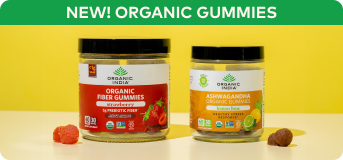

Section

Back
If you’re a Matcha or green tea lover, chances are you’ve come across the Ayurvedic herb, Moringa.
Also known as “the tree of life”, Moringa is one of Ayurveda’s original green superfoods (and also makes a mean latte).
But, how does traditional Moringa stack up against ultra-trendy Matcha?
This article breaks it down as we compare Moringa vs Matcha for health, beauty, flavor, nutrition, versatility, antioxidants and more.
Contents
- What is Moringa
- What is Matcha
- Moringa vs Matcha Overview
- Moringa vs Matcha Benefits
- Moringa Latte vs Matcha Latte
- Can I Take Together?
- High Quality Moringa
What is Moringa?
Also known as “the tree of life,” Moringa comes from the Moringa tree and has a rich history of traditional use in Ayurveda and other wellness practices throughout Africa and Asia.
Moringa leaves are the most commonly used part of the tree in powders and supplements, but some herbal formulas also utilize the seeds and bark.
Moringa leaves and drumsticks (the long seedpods) are also frequently used in Indian cooking, and Moringa fiber, which is ultra-strong, is used to make rope, dye, and fertilizer.
In its whole, raw form, Moringa is considered nutrient-rich and is often celebrated for its supergreen status. It contains a broad spectrum of naturally occurring vitamins, minerals, amino acids, and phytonutrients, including potassium, iron, calcium, beta carotene, chlorophyll, and folate. It’s also one of the rare plants that contains all nine essential amino acids, making it a complete plant protein when consumed in its whole form.
Traditionally, Moringa has been used to support:
- Vitality and energy
- Balanced digestion
- Skin and hair nourishment
- Joint comfort
- Oral care rituals
- Nutrient intake during pregnancy and childhood
- Overall wellness and balance in Ayurvedic practice (especially for Kapha and Vata doshas)
Additionally, Moringa contains various antioxidants, such as quercetin and chlorogenic acid, which contribute to its traditional use in wellness practices.
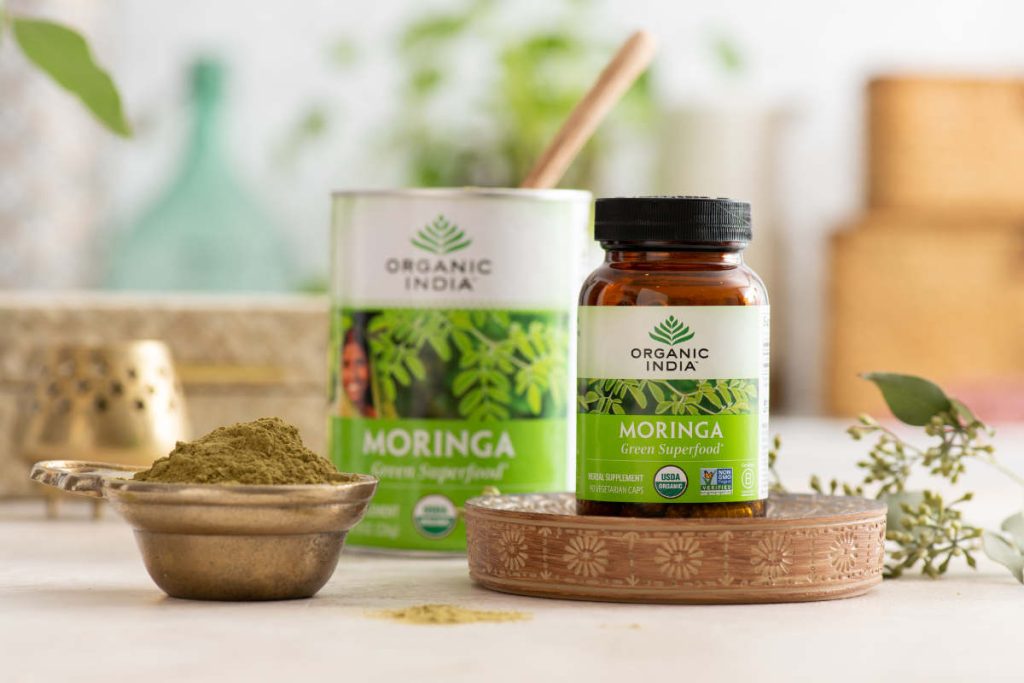
What is Matcha?
Matcha, also known as super-green tea, is a form of green tea in which the whole ground leaf is consumed, rather than just the liquid from steeped leaves.
Native to Japan, Matcha has a rich history of use as a ceremonial beverage, culinary ingredient, and wellness tonic.
In its whole powdered form, Matcha contains naturally occurring nutrients such as chlorophyll, iron, polyphenols, vitamin C, and L-theanine, along with a moderate amount of caffeine.
Traditionally, Matcha has been used to support:
- Mental clarity and focus
- Gentle energy and alertness
- Skin vitality
- Digestive balance
- Calm and centeredness
- Overall wellness in Japanese tea rituals
Matcha comes in three grades:
- Ceremonial – Smooth and sweeter
- Daily – Stronger but less expensive; works well with milk and sweetener
- Culinary grade – Bolder, more bitter flavor; great for cooking and smoothies
We’ll share more about its flavor and uses in the sections that follow.
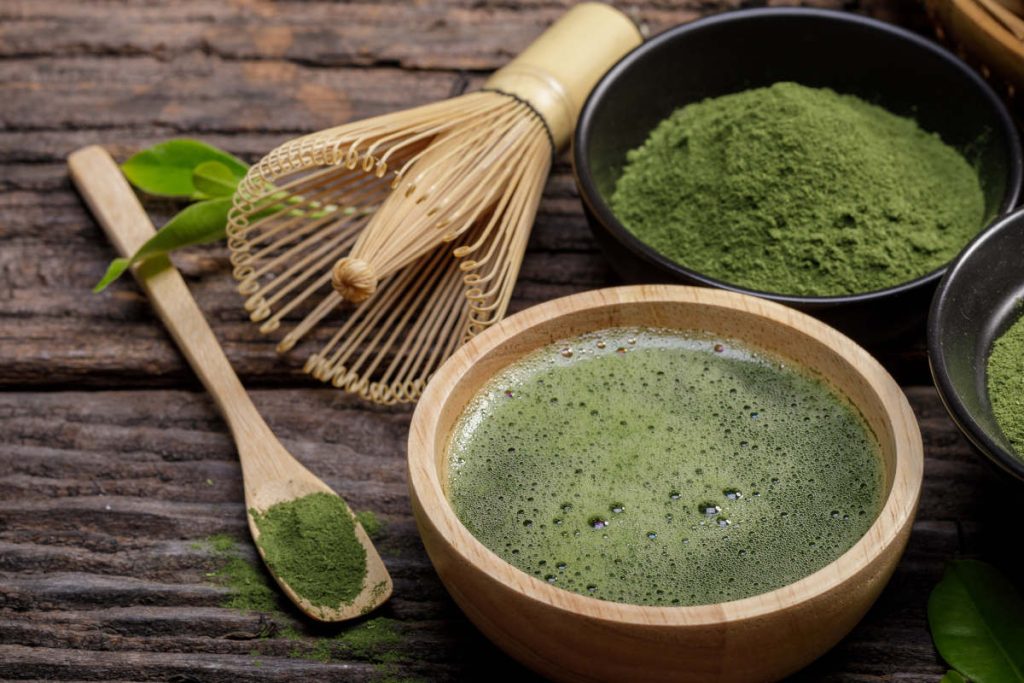
Moringa Vs Matcha: At A Glance
Now that you’re familiar with the basics of Moringa and Matcha, let’s drill down and compare their attributes side by side.
Taste
- Moringa: Earthy, grassy, spicy, pungent, astringent.
- Matcha: Flavor varies by grade and can be grassy, umami-rich, sweet, slightly astringent, smooth, bold, and/or bitter.
Both Moringa and Matcha are complemented by milk and sweeteners, although purists often recommend drinking ceremonial-grade Matcha plain.
Caffeine
- Moringa: Naturally caffeine-free
- Matcha: Contains caffeine, typically less than coffee but more than most herbal teas.
Nutrition
Moringa is considered one of the world’s most nutrient-rich plants in its whole form, offering a broad spectrum of naturally occurring vitamins, minerals, and phytonutrients.
Matcha also contains beneficial compounds, including antioxidants and chlorophyll, and is valued for its unique combination of energizing and calming properties.
Wellness Traditions
Moringa has been traditionally used in various cultures to support vitality and nourishment, especially in regions where access to diverse foods is limited.
Matcha has long been revered in Japanese tea ceremonies and wellness rituals for its energizing and meditative qualities.
Preparations
Matcha is versatile and can be enjoyed “neat,” made into lattes, baked into cookies and pastries, blended into smoothies, used as a natural food dye, and even incorporated into skincare products.
Moringa is also highly versatile and can be enjoyed in its whole form — as a leafy green in salads, sautés, stir-fries, soups, and smoothies. As a powder, it can be used to make tea or lattes, incorporated into baked goods and desserts, added to savory soups and dips, and blended into smoothies.
Color
High-quality Matcha and Moringa are both a vibrant green color.
Origin
Moringa is native to India, Africa, and parts of South Asia, where it has been cultivated for centuries as a nourishing food and revered plant in traditional wellness systems. Today, the most vibrant and nutrient-rich Moringa is often grown on small family farms using regenerative organic practices that honor the land and local ecosystems.
Matcha originated in China and was refined in Japan, where it became central to ceremonial tea culture. The finest Matcha is typically shade-grown and hand-harvested in pristine regions like Kagoshima, Shizuoka, and Uji, known for their clean air, mineral-rich volcanic soil, and generations of artisanal farming. These areas are home to small-scale growers who use time-honored techniques to produce Matcha with exceptional flavor, color, and quality.
Whether choosing Moringa or Matcha, look for varieties that are organic, sustainably grown, and ideally sourced from farms that prioritize regenerative agriculture and purity testing.
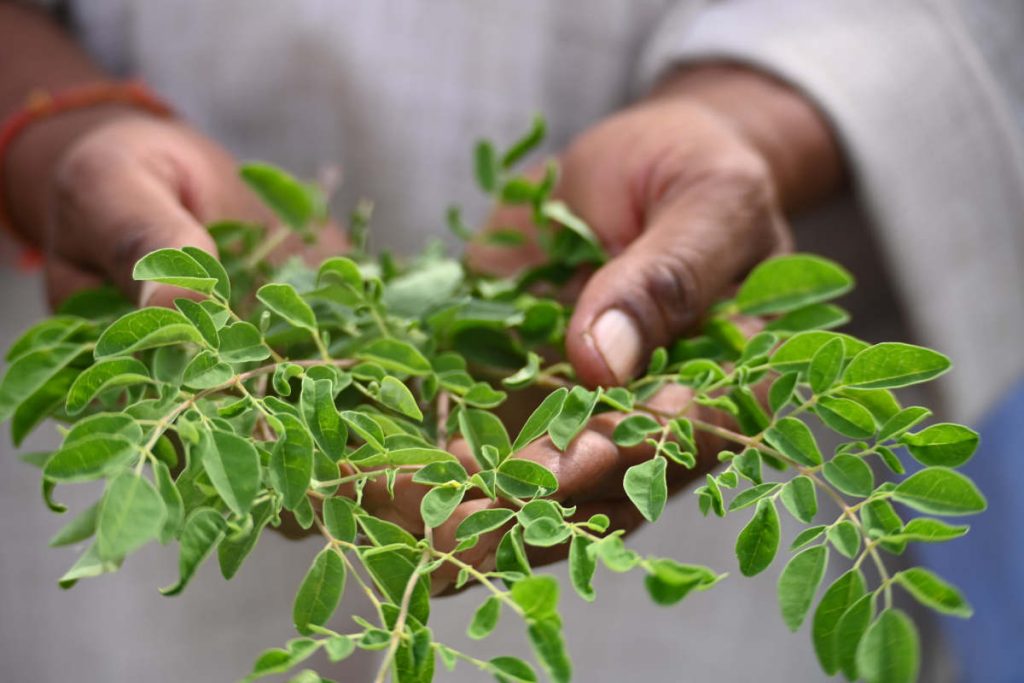
Matcha vs Moringa Benefits
Matcha and Moringa have long histories of traditional use in wellness practices across Asia and beyond. While both are celebrated for their vibrant green color and versatility, they offer different nutrient profiles in their whole, raw forms. Below, we explore how each has been traditionally used to support everyday well-being.
Matcha vs Moringa for Metabolic Balance
Both Matcha and Moringa have been traditionally used to support overall vitality and balance. In their whole forms, they contain naturally occurring compounds that are associated with energy, digestion, and metabolic harmony.
Matcha, with its moderate caffeine content and antioxidant profile, is often enjoyed as a gentle energizer and part of morning rituals. Moringa contains plant-based nutrients and fiber, is valued in traditional wellness systems for its role in supporting nourishment and internal balance.
While emerging research continues to explore their roles in supporting healthy body composition and metabolic wellness, more studies are needed to fully understand their potential.
Matcha vs Moringa for Daily Wellness
Matcha and Moringa are both celebrated for their roles in supporting overall wellness.
Matcha is often chosen for its energizing qualities and antioxidant activity, while Moringa is favored for its broad spectrum of nutrients and versatility.
While both may play a role in supporting a balanced lifestyle, individual results may vary and more research is ongoing.
Matcha vs Moringa for Hair & Skin
Moringa and Moringa oil have a long history of traditional use for supporting hair and skin care routines.
It’s often used internally and externally in Ayurvedic practices to nourish and revitalize.
Matcha is also popular in skincare for its antioxidant content and is often used to promote a youthful glow.
Though less known for hair, its nutrients may offer complementary support.
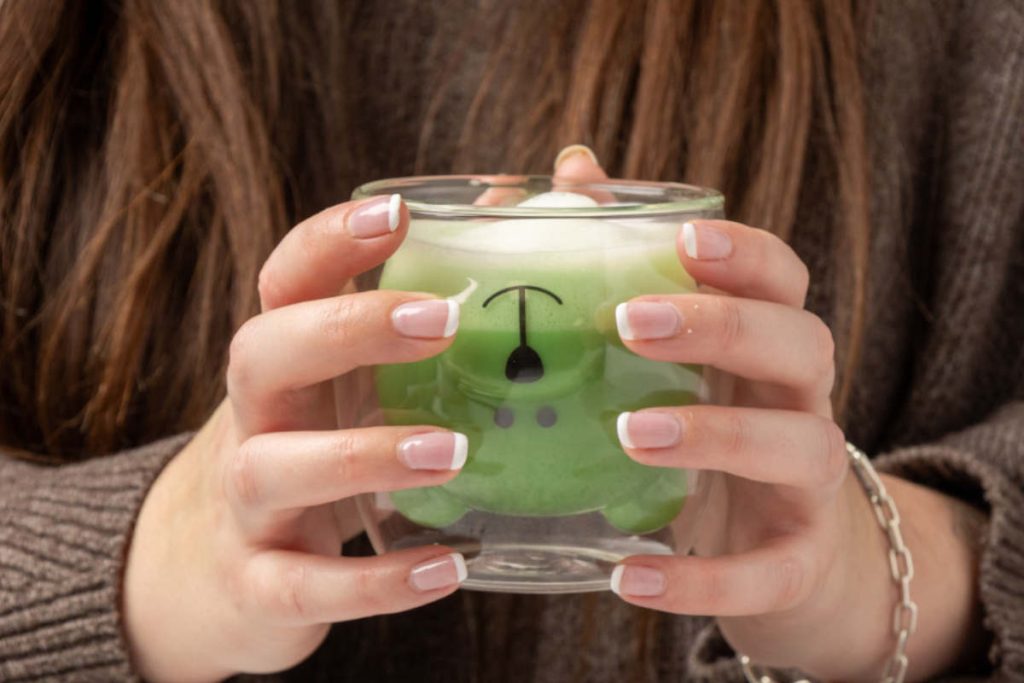
Matcha Latte vs Moringa Latte
Both Matcha and Moringa make excellent, bright green lattes.
Moringa tends to be more earthy and grassy, while Matcha is sweeter with a stronger umami flavor.
Matcha’s caffeine content makes it a popular morning beverage, while Moringa offers a nutrient-rich, caffeine-free alternative suitable for any time of day.
You can also combine Moringa and Matcha to make a complex, vibrant half-caf latte. Follow this recipe to learn how.
Can I take Matcha and Moringa together?
Yes! Moringa and Matcha complement each other well in beverages like lattes. If you’re focusing on nutrient absorption, consider spacing them out by a couple of hours, as caffeine may influence how certain nutrients are absorbed.
Matcha Latte vs Moringa Latte
Both Matcha and Moringa create vibrant, green lattes, but the experience and benefits are beautifully distinct.
Matcha offers a sweet, umami-rich flavor and a gentle caffeine lift, making it a popular morning ritual. But if you’re seeking a caffeine-free alternative that still energizes, Moringa is a powerful choice.
Earthy, grounding, and nutrient-dense, Moringa delivers a natural vitality boost without the jitters. It’s known to be a supergreen, making it ideal for both morning clarity and afternoon calm. And when paired with organic cacao, as in Organic India Chocolate Moringa Latte, it becomes a deeply nourishing, indulgent superfood blend. Think: velvety chocolate, subtle green earthiness, and a sense of sustained wellness in every sip.
Want the best of both worlds? Try a half-caf Moringa-Matcha latte for a layered flavor and balanced energy. Follow this recipe to learn how.
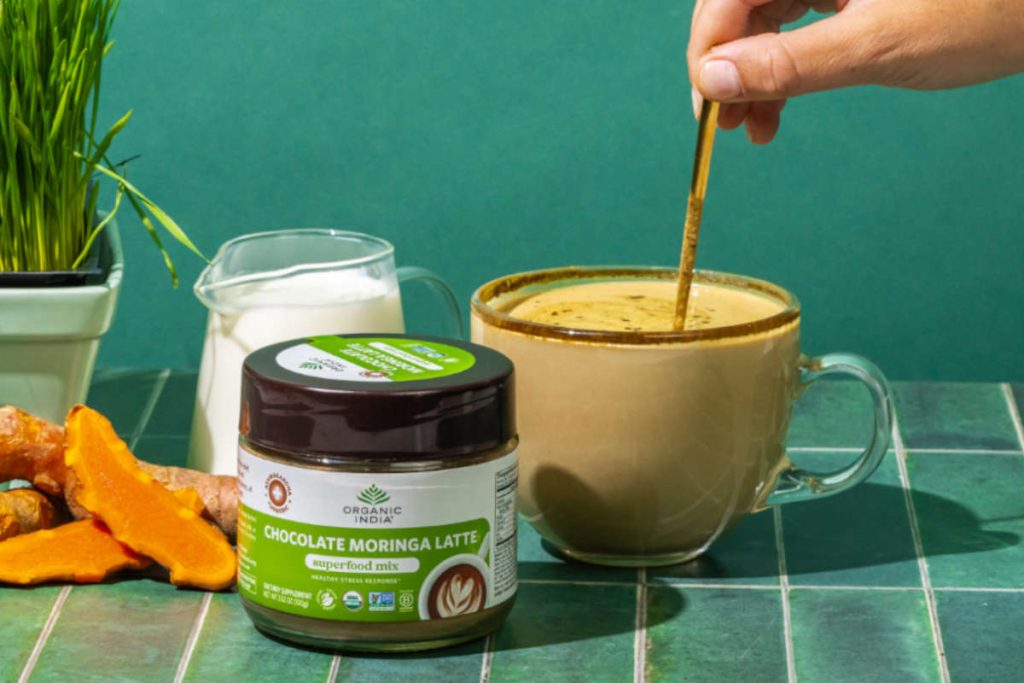
Can I take Matcha and Moringa together?
Yes! Moringa and Matcha complement each other well in beverages, like lattes.
However, since caffeine can interfere with the absorption of key nutrients, such as iron, magnesium, B vitamins, and calcium, taking them separately (a couple hours apart) is recommended if increasing nutrient levels is your goal.
Experience High Quality Organic Moringa from India
Organic India has been a pioneer in growing and bringing high-quality, organic, regeneratively grown, purity-tested, fairly and directly traded, Non-GMO Moringa into the West.
Experience the clean energy and nutrient boost of our clean Moringa in:
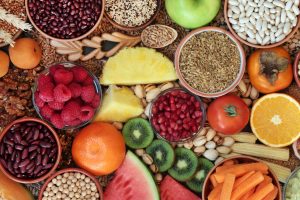

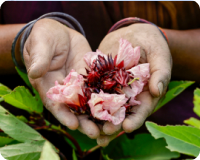
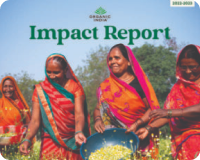
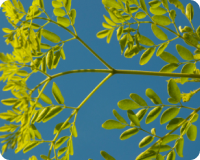
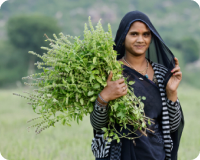
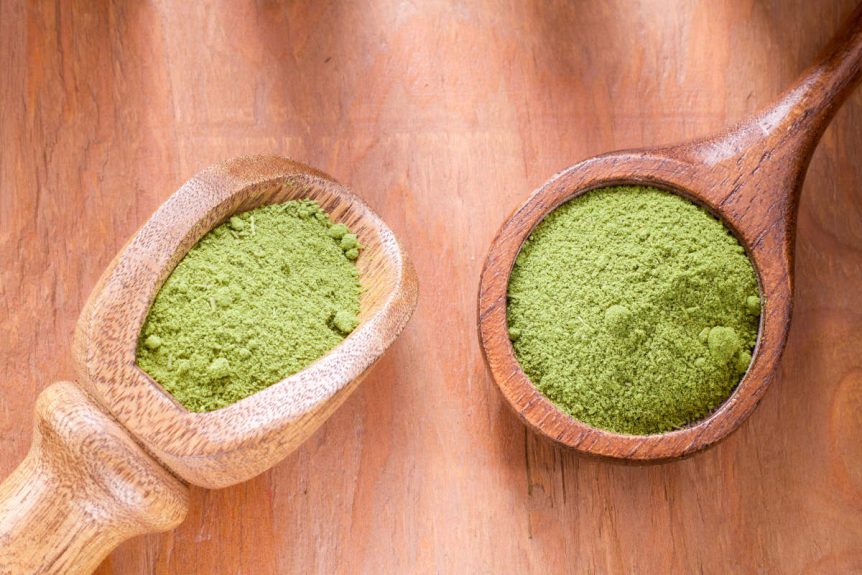
 Kristen Boye is a freelance natural health and green living writer, copywriter, and editor. Kristen was raised on an organic farm in British Columbia which inspired her life’s work. She holds a Bachelor’s Degree in Natural Health, is a Certified Natural Foods Chef, a medicinal herb farmer, natural foods advocate, and is obsessed with writing, homesteading, researching, regenerative agriculture, and words in general. Kristen lives with her husband and two children on their medicinal herb farm in Western North Carolina. Visit her online at:
Kristen Boye is a freelance natural health and green living writer, copywriter, and editor. Kristen was raised on an organic farm in British Columbia which inspired her life’s work. She holds a Bachelor’s Degree in Natural Health, is a Certified Natural Foods Chef, a medicinal herb farmer, natural foods advocate, and is obsessed with writing, homesteading, researching, regenerative agriculture, and words in general. Kristen lives with her husband and two children on their medicinal herb farm in Western North Carolina. Visit her online at: